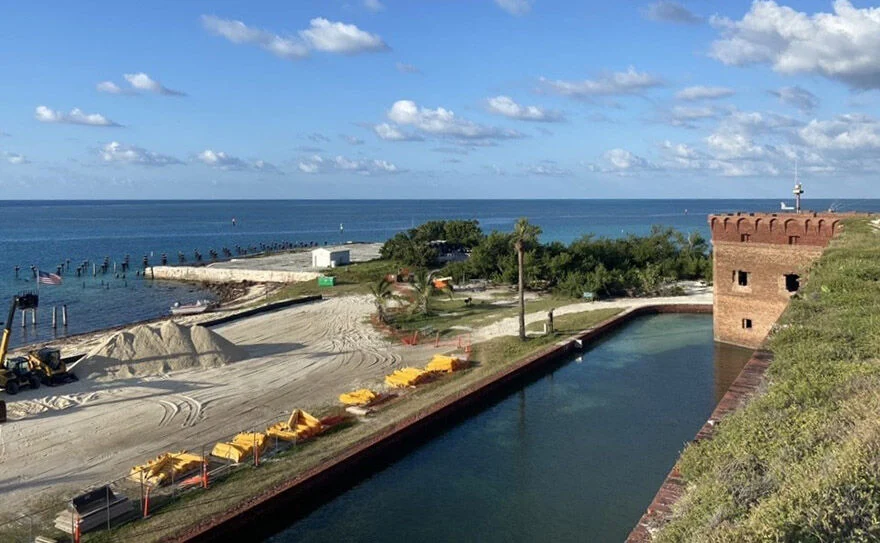Next Phases of Restoration and Dredging
Dry Tortugas National Park has announced the reopening of its campground following a scheduled dredging operation at the Fort Jefferson moat. The project, aimed at redistributing sand accumulated from recent hurricanes, necessitated a 45-day closure of the campground to accommodate the use of heavy machinery, as stated by the National Park Service.
The ongoing restoration initiative will next target the finger piers, aiming to enhance access to the Garden Key waterfront for recreational purposes. Subsequently, dredging activities will shift to the moat near North Beach. During these phases, the vicinity of the campground will serve as a staging area, potentially restricting overflow camping options.
Comprehensive Moat and Counterscarp Repairs
This extensive dredging effort is part of a broader strategy to maintain the moat’s water flow and repair damages to Fort Jefferson’s counterscarp (moat wall), inflicted by hurricanes Irma in 2017 and Ian in 2022. The project’s final stages will focus on mending breaches in the moat wall and fortifying the structure, with completion expected by fall.
Visitor Experience During Construction
Visitors arriving for day trips via seaplane, ferry, or private boat may experience noise and visual disturbances due to ongoing construction activities. Park authorities are coordinating with the contractors to ensure safe and maximized access to both Garden Key and Fort Jefferson for all guests.
Funding and Support for Dredging Operations
Funding for the repairs and dredging operations has been secured through construction allocations from Public Law 115-123, designated for national parks affected by hurricanes Harvey, Irma, and Maria.
About Dry Tortugas National Park
Located approximately 70 miles west of Key West, Dry Tortugas National Park comprises seven islands known as the Dry Tortugas. At its heart lies Fort Jefferson, a monumental 19th-century American masonry coastal fort constructed in 1846 to safeguard maritime routes into the Gulf of Mexico. Garden Key, the fort’s site, is the focal point for visitors and hosts the park’s visitor center, administrative offices, docking facilities, campground, and beaches over its 14-acre expanse.
